Adaptive Automation Assembly Systems in the Industry 4.0 Era: A Reference Framework and Full–Scale Prototype
Abstract
Featured Application
Abstract
1. Introduction
- Ergonomic work conditions; such factors, if not optimized properly, can further reduce productivity causing musculoskeletal disorders (MSDs) and other related factors, e.g., absenteeism, stress.
2. Literature Review
3. New Methodological Framework
4. A Full-Scale Prototypal Adaptive Automation Assembly System
4.1. Hardware Prototype
4.2. Real-Time Control and Reconfiguration
4.3. Motion Analysis System for Productive and Ergonomic Evaluation
5. Experimental Analysis
- Configuration #1: traditional MAS;
- Configuration #2: SASAS prototype, including Configuration #2.1 (SASAS prototype with manual reconfiguration) and Configuration #2.2 (SASAS prototype with automatic reconfiguration).
6. Multi-Scenario Analysis
- MT: (mounting time) of the assembly process [sec/pc]
- ART: (average reconfiguration time) for a single reconfiguration task of the SASAS [sec/reconfiguration]
- RN: (number of reconfigurations) during the cycle time [# reconfigurations/cycle time]
- M%: (average masked time percentage) of the SASAS reconfiguration during the assembly tasks performed by the operator [%]. For SASAS prototype with manual reconfiguration M% = 0, while, in the case of automatic reconfiguration and complete collaboration, M% = 100.
- CTmr: (cycle time with manual reconfiguration) of the SASAS prototype (as in Configuration #2.1) [sec/pc] evaluated as:
- CTar: (cycle time with automatic reconfiguration) of the SASAS prototype (as in Configuration #2.2) [sec/pc] evaluated as:
- DELTA: (gap percentage of the cycle time between the two configurations) of the SASAS prototype evaluated as in Equation (4).
7. Conclusions and Future Research
Author Contributions
Funding
Institutional Review Board Statement
Informed Consent Statement
Data Availability Statement
Conflicts of Interest
References
- Hu, S.J. Evolving paradigms of manufacturing: From mass production to mass customization and personalization. Proc. CIRP 2013, 7, 3–8. [Google Scholar] [CrossRef]
- Bortolini, M.; Galizia, F.G.; Mora, C. Reconfigurable manufacturing systems: Literature review and research trend. J. Manuf. Syst. 2018, 49, 93–106. [Google Scholar] [CrossRef]
- Bortolini, M.; Galizia, F.G.; Mora, C.; Pilati, F. Reconfigurability in cellular manufacturing systems: A design model and multi-scenario analysis. Int. J. Adv. Manuf. Tech. 2019, 104, 4387–4397. [Google Scholar] [CrossRef]
- Fatorachian, H.; Kazemi, H. A critical investigation of Industry 4.0 in manufacturing: Theoretical operationalisation framework. Prod. Plan. Contr. 2018, 29, 633–644. [Google Scholar] [CrossRef]
- Azzi, A.; Battini, D.; Faccio, M.; Persona, A.; Sgarbossa, F. Inventory holding costs measurement: A multi-case study. Int. J. Log. Manag. 2014, 25, 109–132. [Google Scholar] [CrossRef]
- Nee, A.Y.; Ong, S.K.; Chryssolouris, G.; Mourtzis, D. Augmented reality applications in design and manufacturing. CIRP Ann. Manuf. Tech. 2012, 61, 657–679. [Google Scholar] [CrossRef]
- Davies, R. Industry 4.0. Digitalisation for Productivity and Growth; European Parliamentary Research Service: Brussels, Belgium, 2015. [Google Scholar]
- Moussa, M.; ElMaraghy, H. Master assembly network for alternative assembly sequences. J. Manuf. Syst. 2019, 51, 17–28. [Google Scholar] [CrossRef]
- Bortolini, M.; Ferrari, E.; Gamberi, M.; Pilati, F.; Faccio, M. Assembly system design in the Industry 4.0 era: A general framework. IFAC-PapersOnLine 2017, 50, 5700–5705. [Google Scholar] [CrossRef]
- Fast-Berglund, A.; Fassberg, T.; Hellman, F.; Davidsson, A.; Stahre, J. Relations between complexity, quality and cognitive automation in mixed-model assembly. J. Manuf. Syst. 2013, 32, 449–455. [Google Scholar] [CrossRef]
- Wyman, O. Surprise: Robots Aren’t Replacing Humans in Key Areas of Manufacturing. Forbes (online). Available online: https://www.forbes.com/sites/oliverwyman/2017/02/03/surprise-the-correct-answer-is-not-always-to-go-with-the-robot-just-ask-someautomakers/#490e3a97120a (accessed on 5 November 2017).
- Fletcher, S.R.; Johnson, T.; Adlon, T.; Larreina, J.; Casla, P.; Parigot, L.; Alfaro, P.J.; del Mar Otero, M. Adaptive automation assembly: Identifying system requirements for technical efficiency and worker satisfaction. Comp. Ind. Eng. 2020, 139, 105772. [Google Scholar] [CrossRef]
- Heilala, J.; Voho, P. Modular reconfigurable flexible final assembly system. Assem. Autom. 2001, 21, 20–30. [Google Scholar] [CrossRef]
- Heilala, J.; Montonen, J.; Vaatainen, O. Life cycle and unit-cost analysis for modular reconfigurable flexible light assembly systems. J. Eng. Manuf. 2008, 222, 1289–1299. [Google Scholar] [CrossRef]
- Rosati, G.; Faccio, M.; Carli, A.; Rossi, A. Fully flexible assembly systems (F-FAS): A new concept in flexible automation. Assemb. Autom. 2013, 33, 8–21. [Google Scholar] [CrossRef]
- Rosati, G.; Faccio, M.; Finetto, C.; Carli, A. Modelling and optimization of fully flexible assembly systems (F-FAS). Assemb. Autom. 2013, 33, 165–174. [Google Scholar] [CrossRef]
- Wild, R. On the selection of mass production systems. Int. J. Prod. Res. 1975, 13, 443–461. [Google Scholar] [CrossRef]
- Finnsgard, C.; Wanstrom, C.; Medbo, L.; Neumann, W.P. Impact of materials exposure on assembly workstation performance. Int. J. Prod. Res. 2011, 49, 7253–7274. [Google Scholar] [CrossRef]
- Finnsgard, C.; Wanstrom, C. Factors impacting manual picking on assembly lines: An experiment in the automotive industry. Int. J. Prod. Res. 2013, 51, 1789–1798. [Google Scholar]
- Bortolini, M.; Faccio, M.; Gamberi, M.; Galizia, F.G.; Pilati, F. Design, engineering and testing of an innovative adaptive automation assembly system. Assemb. Autom. 2020, 40, 531–540. [Google Scholar] [CrossRef]
- Chryssolouris, G.; Mavrukios, D.; Papakostas, N.; Mourtzis, D.; Michalos, G.; Georgoulias, K. Digital manufacturing: History, perspectives, and outlook. Proc. Inst. Mech. Eng. Part B J. Eng. Manuf. 2009, 223, 451–462. [Google Scholar]
- Di Orio, G.; Candido, G.; Barata, J. Self-learning production systems: A new production paradigm. Sustain. Des. Manuf. 2014, 1, 887–898. [Google Scholar]
- Faccio, M.; Bottin, M.; Rosati, G. Collaborative and traditional robotic assembly: A comparison model. Int. J. Adv. Manuf. Tech. 2019, 102, 1355–1372. [Google Scholar] [CrossRef]
- Andersen, A.L.; Brunoe, T.D.; Nielsen, K.; Rosio, C. Towards a generic design method for reconfigurable manufacturing systems: Analysis and synthesis of current design methods and evaluation of supportive tools. J. Manuf. Syst. 2017, 42, 179–195. [Google Scholar] [CrossRef]
- Sanderson, D.; Chaplin, J.C.; Ratchev, S. A function-behaviour-structure design methodology for adaptive production systems. Int. J. Adv. Manuf. Tech. 2019, 105, 3731–3742. [Google Scholar] [CrossRef]
- Galizia, F.G.; ElMaraghy, H.; Bortolini, M.; Mora, C. Product platforms design, selection and customisation in high-variety manufacturing. Int. J. Prod. Res. 2020, 58, 893–911. [Google Scholar] [CrossRef]
- Khosravani, M.R.; Nasiri, S.; Weinberg, K. Application of case-based reasoning in a fault detection system on production of drippers. Appl. Soft Comp. 2019, 75, 227–232. [Google Scholar]
- Rastegarzadeh, S.; Mahzoon, M.; Mohammadi, H. A novel modular designing for multi-ring flywheel rotor to optimize energy consumption in light metro trains. Energy 2020, 206, 118092. [Google Scholar] [CrossRef]
- De Silva, L.; Felli, P.; Sanderson, D.; Chaplin, J.C.; Logan, B.; Ratchev, S. Synthesising process controllers from formal models of transformable assembly systems. Rob. Comput. Int. Manuf. 2019, 58, 130–144. [Google Scholar] [CrossRef]
- ElMaraghy, H.; ElMaraghy, W. Smart adaptable assembly systems. Proc. CIRP 2016, 44, 4–13. [Google Scholar] [CrossRef]
- ElMaraghy, H. Smart changeable manufacturing systems. Proc. Manuf. 2019, 28, 3–9. [Google Scholar] [CrossRef]
- Andrieu, C.; De Freitas, N.; Doucet, A.; Jordan, M.I. An introduction to MCMC for machine learning. Mach. Learn. 2003, 50, 5–43. [Google Scholar] [CrossRef]
- Cohen, Y.; Naseraldin, H.; Chaudhuri, A.; Pilati, F. Assembly systems in the Industry 4.0 era: A road map to understand Assembly 4.0. Int. J. Adv. Manuf. Tech. 2019, 105, 4037–4054. [Google Scholar] [CrossRef]
- Kruger, J.; Lien, T.K.; Verl, A. Cooperation of human and machines in assembly lines. CIRP Ann. 2009, 58, 628–646. [Google Scholar] [CrossRef]
- Fast-Berglund, A.; Mattsson, S.; Bligard, L.O. Finding trends in human-automation interaction research in order to formulate a cognitive automation strategy for final assembly. Int. J. Adv. Rob. Autom. 2016, 1, 2473–3032. [Google Scholar] [CrossRef]
- Cohen, Y.; Faccio, M.; Galizia, F.G.; Mora, C.; Pilati, F. Assembly system configuration through Industry 4.0 principles: The expected changes in the actual paradigms. IFAC-PapersOnLine 2017, 50, 14958–14963. [Google Scholar]
- Calderon Godoy, A.; Gonzalez Perez, I. Integration of sensor and actuator networks and the scada system to promote the migration of the legacy flexible manufacturing system towards the Industry 4.0 concept. J. Sens. Actuat. Netw. 2018, 7, 23. [Google Scholar]
- Battini, D.; Faccio, M.; Persona, A.; Sgarbossa, F. New methodological framework to improve productivity and ergonomics in assembly system design. Int. J. Ind. Ergon. 2011, 41, 30–42. [Google Scholar] [CrossRef]
- McKinnis, M. The effects of using a structured ergonomics design review process in the development of an assembly line. In Advances in Occupational Ergonomics and Safety, Proceedings of the XIII Annual International Occupational Ergonomics and Safety Conference, Orlando, FL, USA, 21–25 July 2018; IOS Press: Amsterdam, The Netherlands, 1998; Volume 2, p. 143. [Google Scholar]
- Weyer, S.; Schmitt, M.; Ohmer, M.; Gorecky, D. Towards Industry 4.0-standardization as the crucial challenge for highly modular, multi-vendor production systems. IFAC-PapersOnLine 2015, 48, 579–584. [Google Scholar] [CrossRef]
- Romero, D.; Bernus, P.; Noran, O.; Stahre, J.; Fast-Berglund, A. The operator 4.0: Human cyber-physical systems & adaptive automation towards human-automation symbiosis work system. In Proceedings of the IFIP International Conference on Advances in Production Management Systems, Iguassu Falls, Brazil, 3–7 September 2016; Springer: Cham, Switzerland, 2016; pp. 677–686. [Google Scholar]
- Wang, X.; Khameneian, A.; Dice, P.; Chen, B.; Shahbakhti, M.; Naber, J.D.; Huberts, G. Control-oriented model-based burn duration and ignition timing prediction with recursive-least-square adaptation for closed-loop combustion phasing control of a spark ignition engine. In Dynamic Systems and Control Conference; American Society of Mechanical Engineers: New York, NY, USA, 2019; Volume 59155, p. V002T12A004. [Google Scholar]
- Gharib, M.R.; Daneshvar, A. Quantitative-fuzzy controller design for multivariable systems with uncertainty. Int. J. Contr. Autom. Syst. 2019, 17, 1515–1523. [Google Scholar] [CrossRef]
- Bortolini, M.; Faccio, M.; Gamberi, M.; Pilati, F. Motion Analysis System (MAS) for production and ergonomics assessment in the manufacturing processes. Comp. Ind. Eng. 2020, 139, 105485. [Google Scholar] [CrossRef]
- Occhipinti, E. OCRA: A concise index for the assessment of exposure to repetitive movements of the upper limbs. Ergonomics 1998, 41, 1290–1311. [Google Scholar] [CrossRef]
- International Standard Organization (ISO). 11228-3:2007. Ergonomics—Manual Handling—Part 3: Handling of low Loads at High Frequency; ISO: Geneva, Switzerland, 2007. [Google Scholar]
- Botti, L.; Mora, C.; Regattieri, A. Integrating ergonomics and lean manufacturing principles in a hybrid assembly line. Comp. Ind. Eng. 2017, 111, 481–491. [Google Scholar] [CrossRef]
- Kenny, D.A. Statistics for the Social and Behavioural Sciences; WCB/McGraw-Hill: Boston, MA, USA, 1986. [Google Scholar]
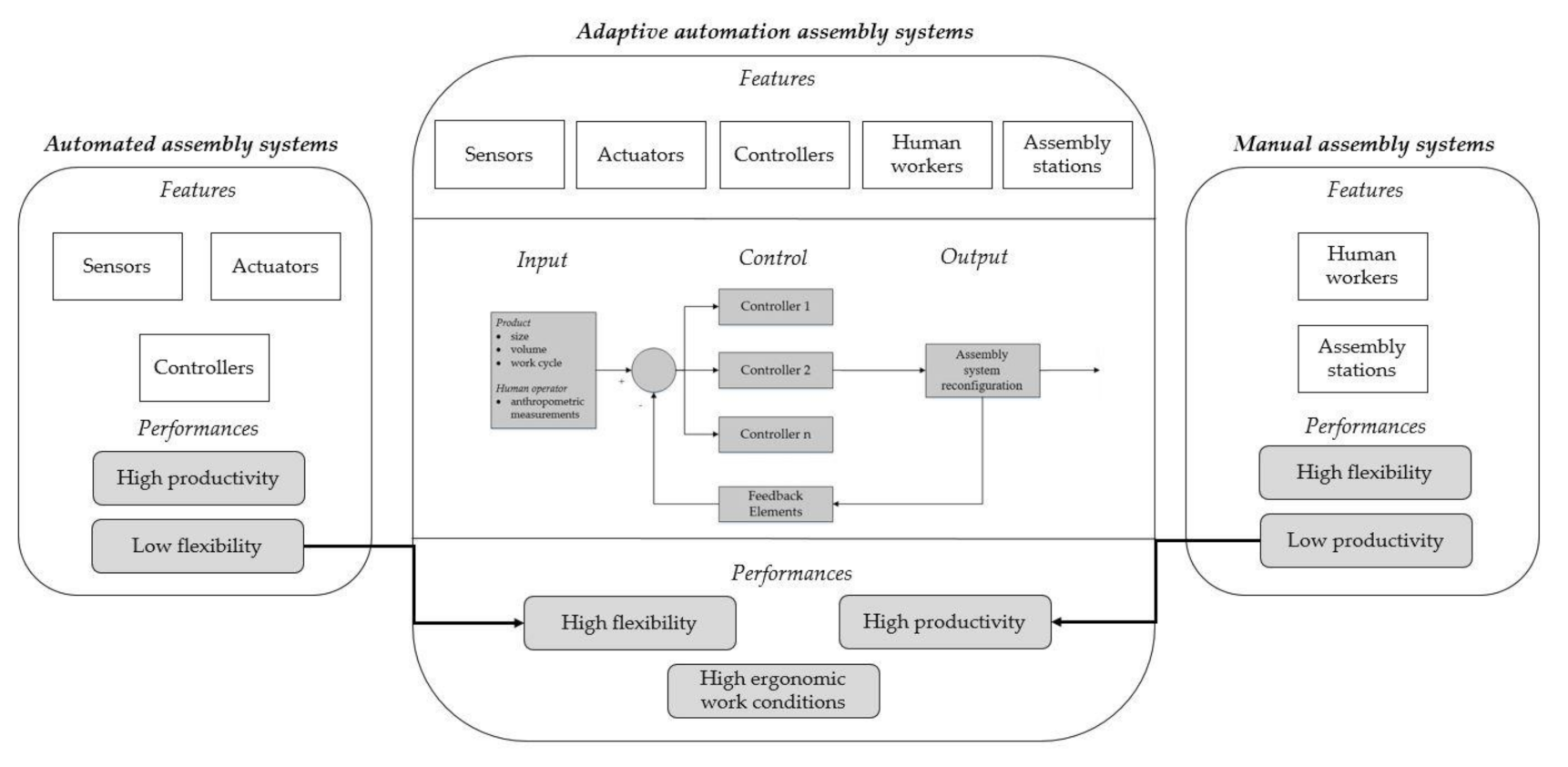
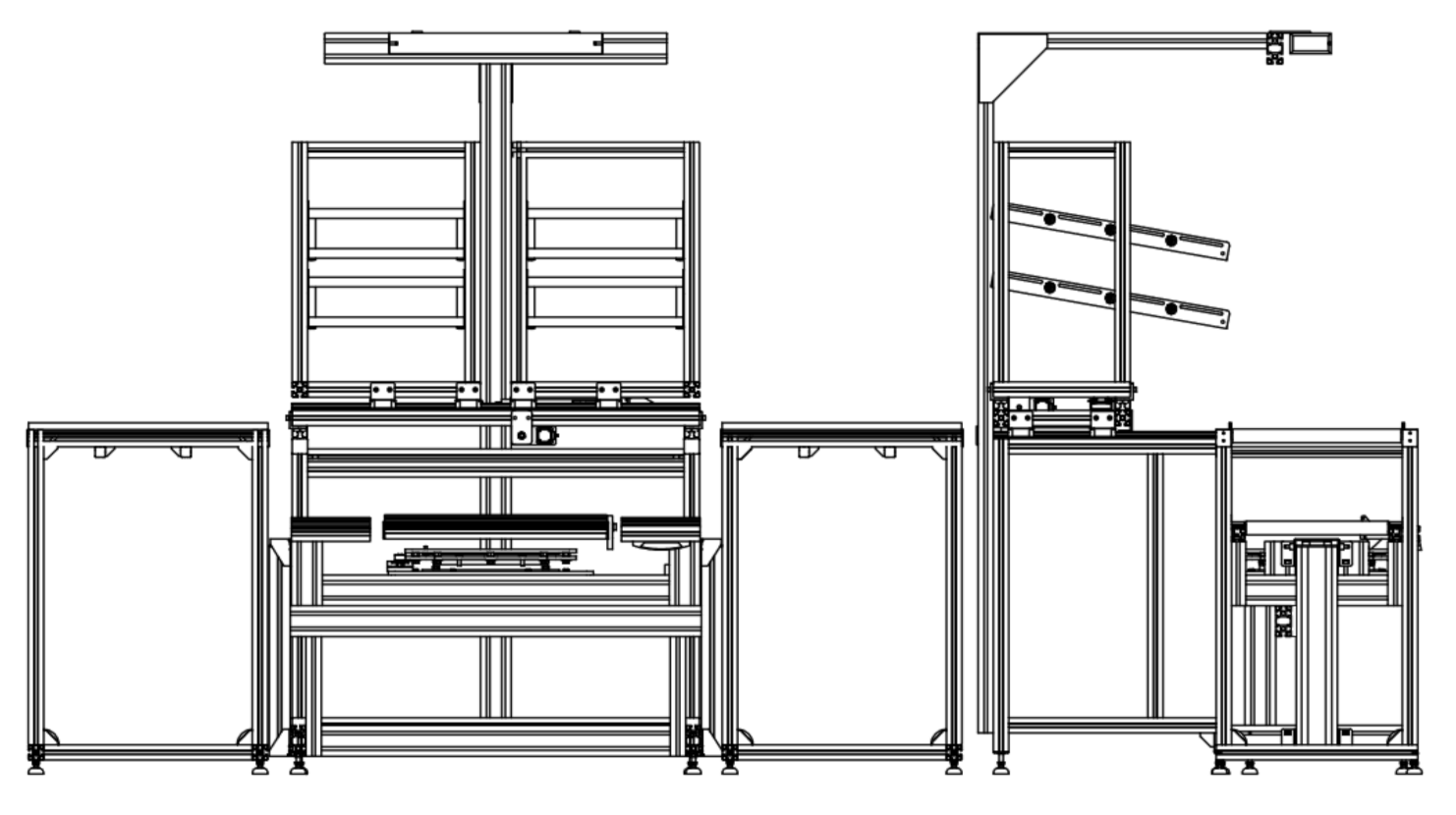
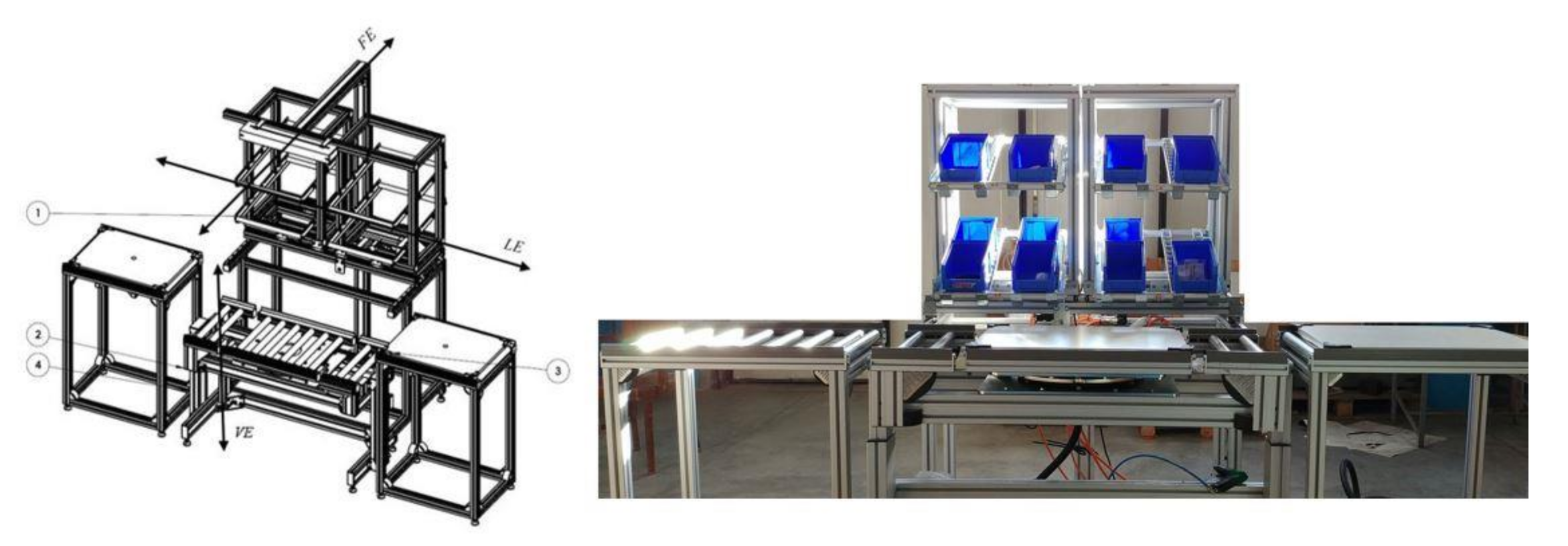
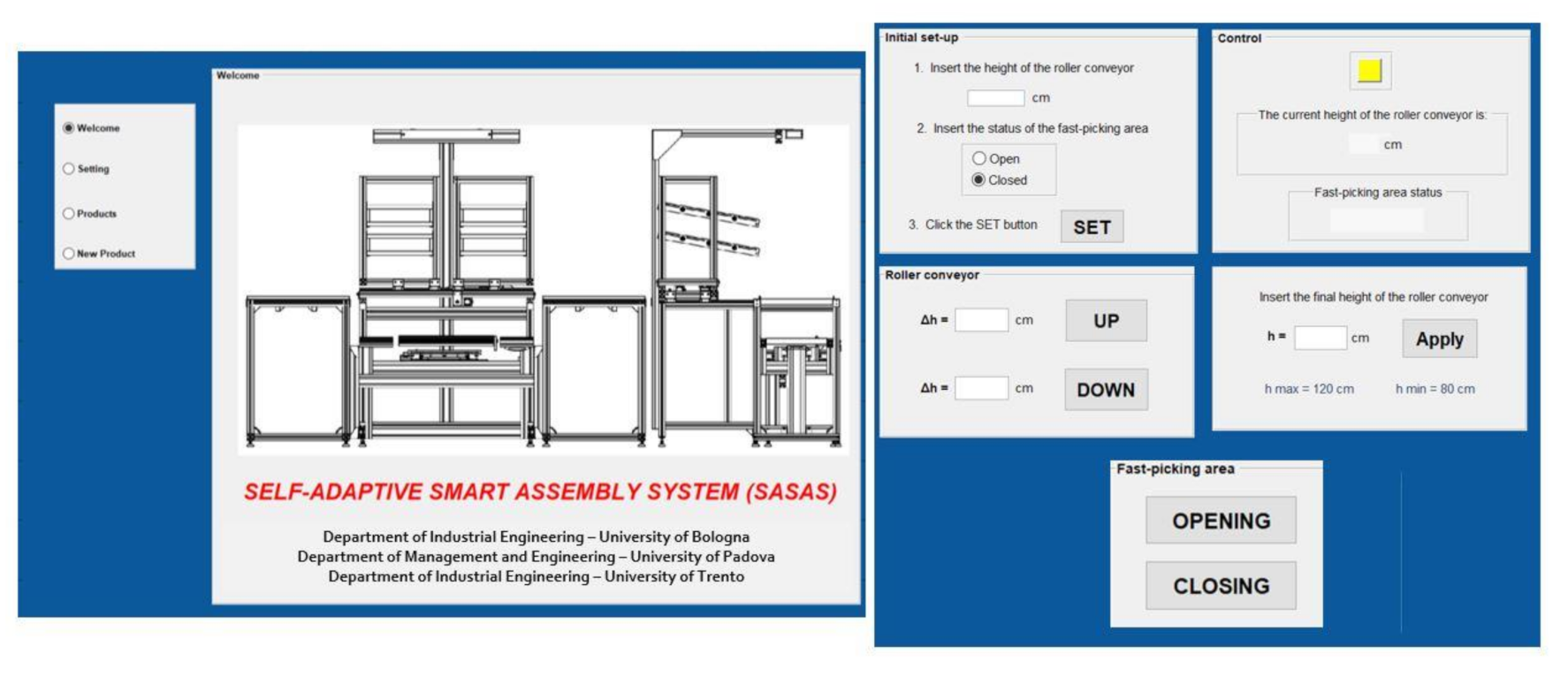


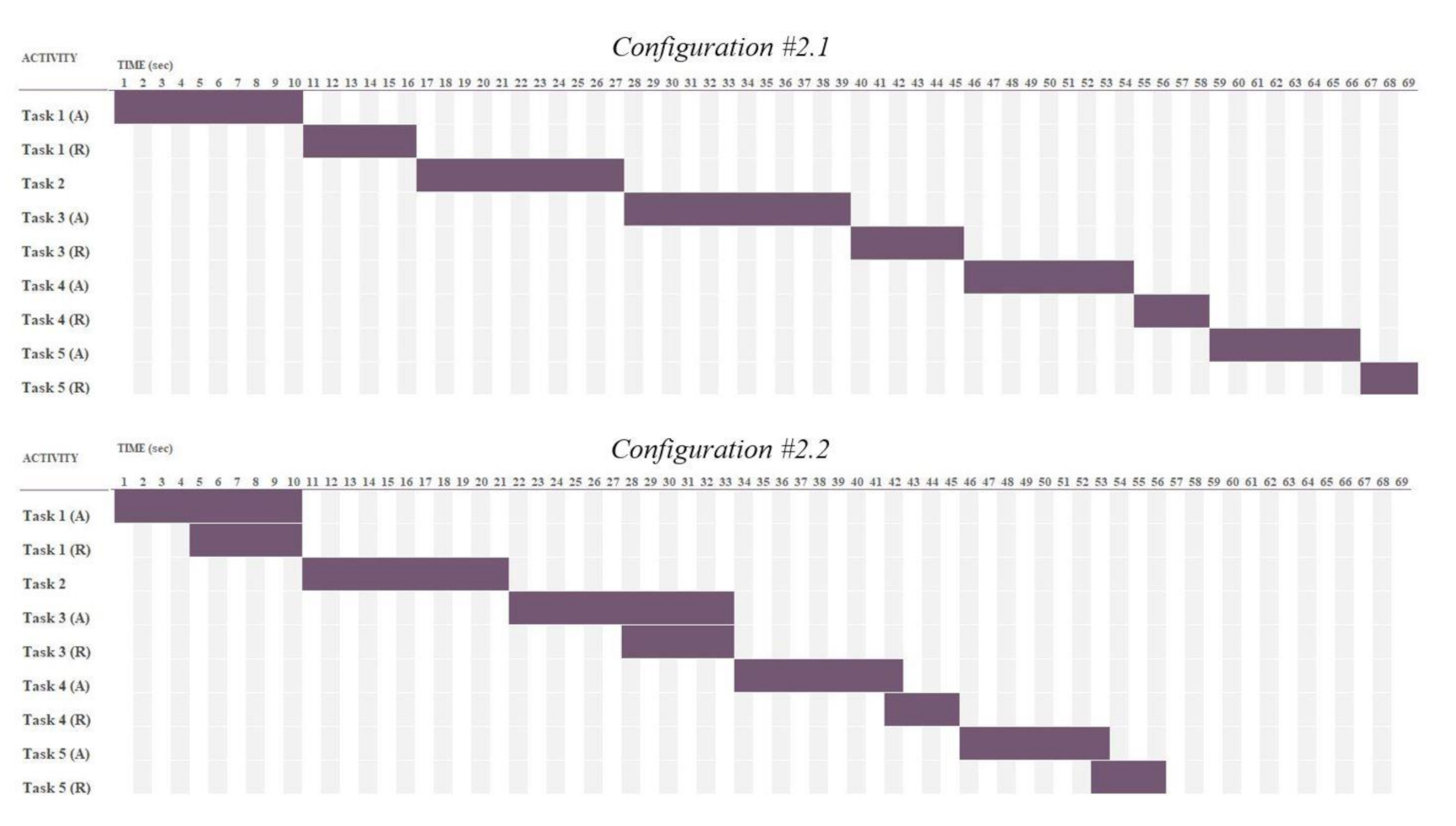

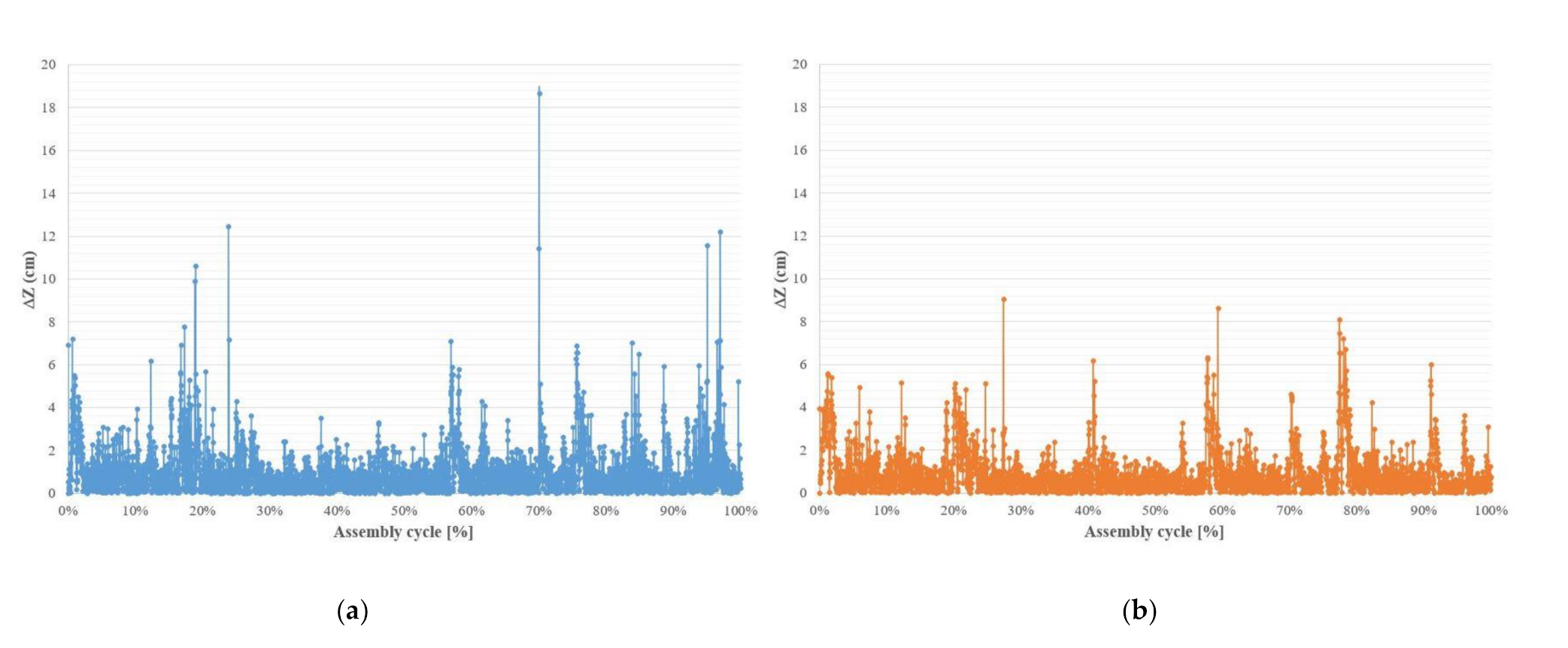
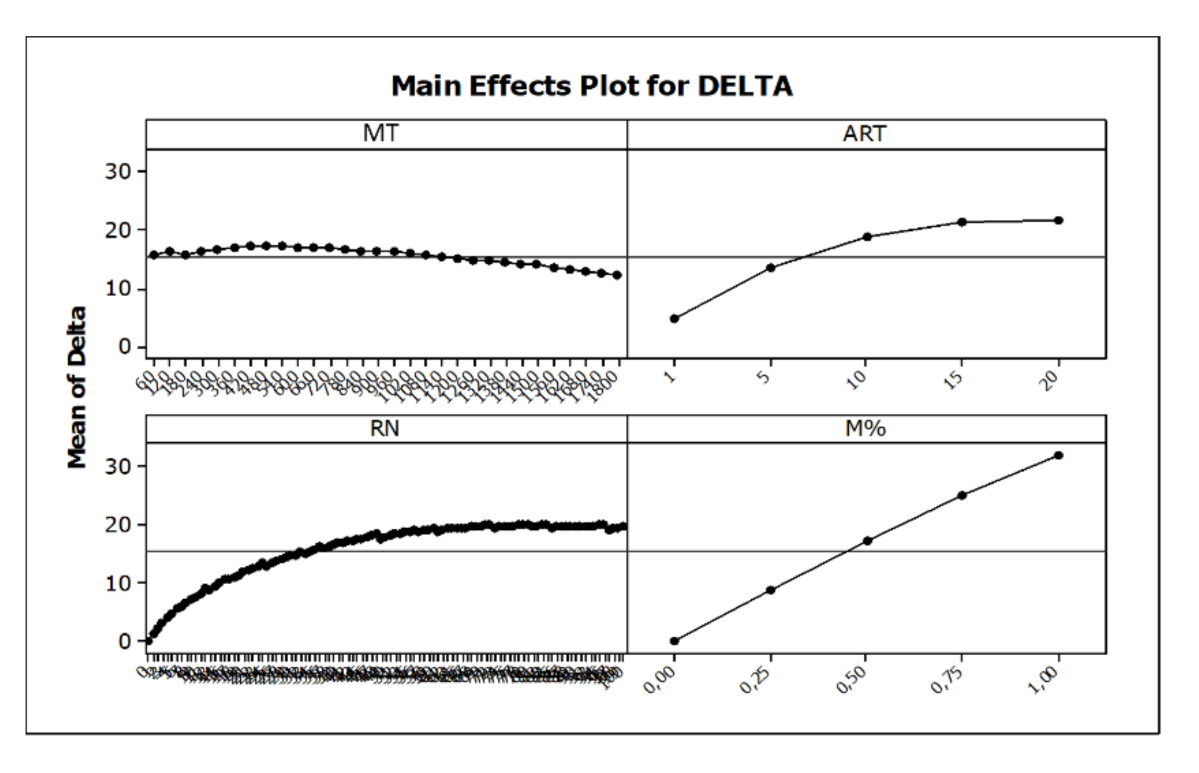

| Id. | Enabling Technology | Description |
|---|---|---|
| 1 | Advanced Manufacturing Solutions | Autonomous, cooperating industrial robots |
| Numerous integrated sensors and standardized interfaces | ||
| 2 | Additive Manufacturing | 3D printing, particularly for spare parts and prototypes |
| Decentralized 3D facilities to reduce transport distances and inventory | ||
| 3 | Augmented Reality | Augmented reality for maintenance, logistics |
| Display of supporting information, e.g., through glasses | ||
| 4 | Simulation | Simulation of value networks |
| Optimization based on real-time data from intelligent systems | ||
| 5 | Horizontal/Vertical Integration | Cross-company data integration based on data transfer standards |
| Precondition for a fully automated value chain | ||
| 6 | Industrial Internet | Network of machines and products |
| Multidirectional communication between networked objects | ||
| 7 | Cloud | Management of huge data volumes in open systems |
| Real-time communication for production systems | ||
| 8 | Cyber-security | Operation in networks and open systems |
| High level of networking between intelligent machines, products and systems | ||
| 9 | Big Data and Analytics | Full evaluation of available data (e.g., from ERP and machine data) |
| Real-time decision-making support and optimization |
| Average Cycle Time | Gap toward Configuration #1 | |
|---|---|---|
| Configuration #1 | 93.6 | - |
| Configuration #2.1 | 69.9 | −25.3% |
| Configuration #2.2 | 57.5 | −38.6% |
| Average Productivity | Gap toward Configuration #1 | |
|---|---|---|
| Configuration #1 | 38.5 | - |
| Configuration #2.1 | 51.5 | +33.9% |
| Configuration #2.2 | 62.6 | +62.8% |
| Tasks | Assembly /Reconfiguration | Task Description | Manual Reconfiguration | Automatic Reconfiguration (Collaboration Effect) |
|---|---|---|---|---|
| Duration [s] | ||||
| #1 | Assembly | Pump crankcase picking and drop-off on the central roller conveyor | 10 | 10 |
| Reconfiguration | Opening of the fast-picking area | 5.9 | 0 | |
| #2 | Assembly | Picking of the pump rotor from the fast-picking area and assembly | 11 | 11 |
| #3 | Assembly | Picking of the seal housing disk from the fast-picking area and assembly | 12 | 12 |
| Reconfiguration | Closing of the fast-picking area | 5.9 | 0 | |
| #4 | Assembly | Screwing operation on the upper surface of the pump | 9 | 9 |
| Reconfiguration | Raising of the central roller conveyor | 4.05 | 3.75 | |
| #5 | Assembly | Screwing operation on the lower surface of the pump | 8 | 8 |
| Reconfiguration | Lowering of the central roller conveyor (0.95 m from the floor) | 4.05 | 3.75 | |
| Configuration #2.1 | Configuration #2.2 | |
|---|---|---|
| Assembly time | 50 | 50 |
| Reconfiguration time | 19.9 | 7.5 |
| Cycle time | 69.9 | 57.5 |
| Average REBA Index | Exposure Risk Level | |
|---|---|---|
| Configuration #1 | 4.16 | Medium |
| Configuration #2.1 | 3.53 | Low |
| Configuration #2.2 | 3.53 | Low |
| Values | Measurement Unit | |
|---|---|---|
| MT | [60: 60: 1800] | Sec/pc |
| ART | [1 5 10 15 20] | Sec/reconfiguration |
| RN | [0:1:100] | integer |
| M% | [0:25:100] | % |
Publisher’s Note: MDPI stays neutral with regard to jurisdictional claims in published maps and institutional affiliations. |
© 2021 by the authors. Licensee MDPI, Basel, Switzerland. This article is an open access article distributed under the terms and conditions of the Creative Commons Attribution (CC BY) license (http://creativecommons.org/licenses/by/4.0/).
Share and Cite
Bortolini, M.; Faccio, M.; Galizia, F.G.; Gamberi, M.; Pilati, F. Adaptive Automation Assembly Systems in the Industry 4.0 Era: A Reference Framework and Full–Scale Prototype. Appl. Sci. 2021, 11, 1256. https://doi.org/10.3390/app11031256
Bortolini M, Faccio M, Galizia FG, Gamberi M, Pilati F. Adaptive Automation Assembly Systems in the Industry 4.0 Era: A Reference Framework and Full–Scale Prototype. Applied Sciences. 2021; 11(3):1256. https://doi.org/10.3390/app11031256
Chicago/Turabian StyleBortolini, Marco, Maurizio Faccio, Francesco Gabriele Galizia, Mauro Gamberi, and Francesco Pilati. 2021. "Adaptive Automation Assembly Systems in the Industry 4.0 Era: A Reference Framework and Full–Scale Prototype" Applied Sciences 11, no. 3: 1256. https://doi.org/10.3390/app11031256
APA StyleBortolini, M., Faccio, M., Galizia, F. G., Gamberi, M., & Pilati, F. (2021). Adaptive Automation Assembly Systems in the Industry 4.0 Era: A Reference Framework and Full–Scale Prototype. Applied Sciences, 11(3), 1256. https://doi.org/10.3390/app11031256










